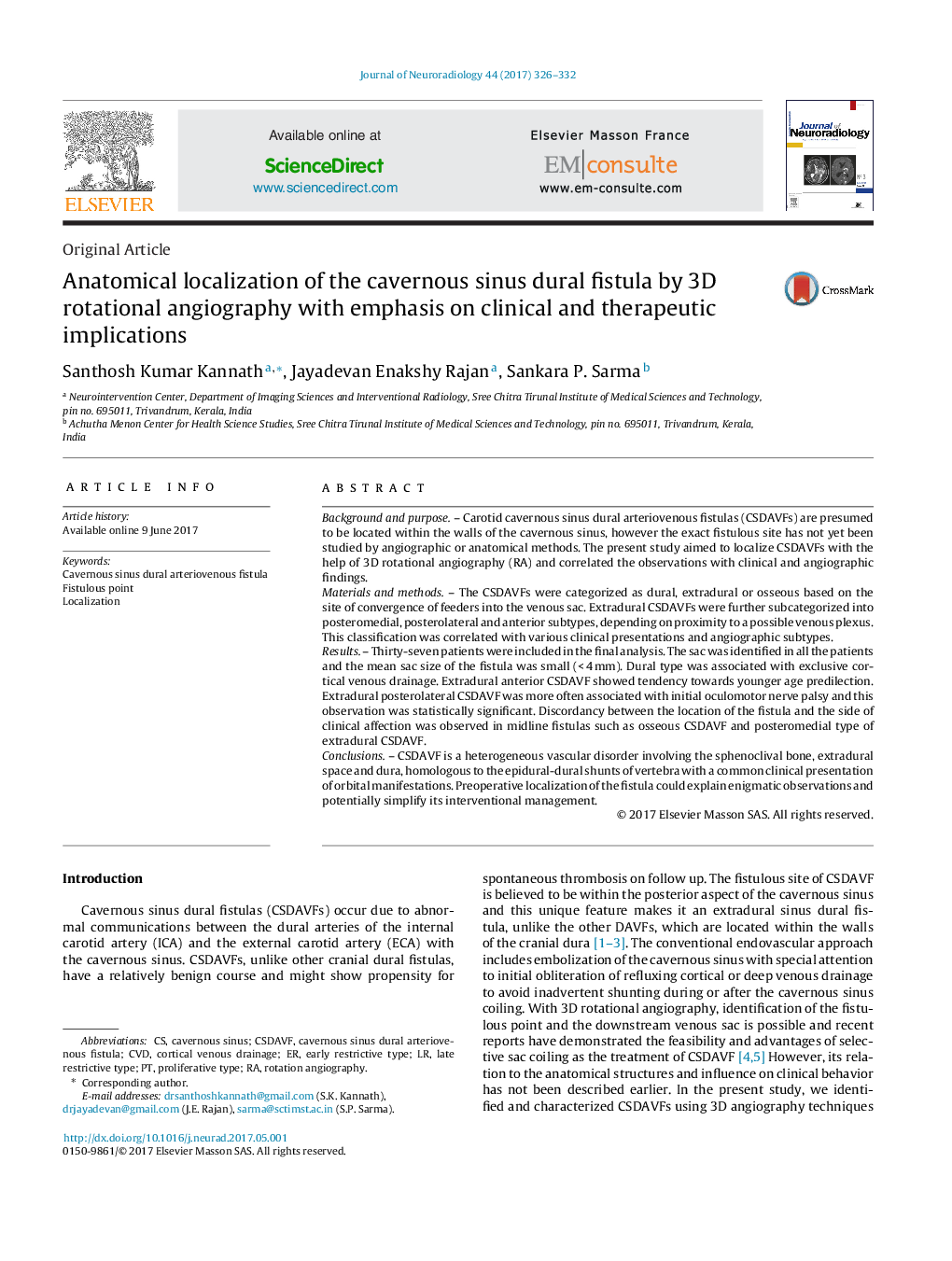| کد مقاله | کد نشریه | سال انتشار | مقاله انگلیسی | نسخه تمام متن |
|---|---|---|---|---|
| 5726963 | 1610277 | 2017 | 7 صفحه PDF | دانلود رایگان |

- The fistulous point of cavernous sinus dural fistula is located outside the cavernous sinus, in the bone, extradural venous plexus or dura, adjacent to cavernous sinus.
- The fistulous sac is very small and thus, it permits selective occlusion of the fistulous point.
- Midline fistulas could present with discordant clinical and angiographic observations.
- Diplopia as an initial clinical manifestation is related to the location of fistula adjacent to oculomotor nerve complex.
Background and purposeCarotid cavernous sinus dural arteriovenous fistulas (CSDAVFs) are presumed to be located within the walls of the cavernous sinus, however the exact fistulous site has not yet been studied by angiographic or anatomical methods. The present study aimed to localize CSDAVFs with the help of 3D rotational angiography (RA) and correlated the observations with clinical and angiographic findings.Materials and methodsThe CSDAVFs were categorized as dural, extradural or osseous based on the site of convergence of feeders into the venous sac. Extradural CSDAVFs were further subcategorized into posteromedial, posterolateral and anterior subtypes, depending on proximity to a possible venous plexus. This classification was correlated with various clinical presentations and angiographic subtypes.ResultsThirty-seven patients were included in the final analysis. The sac was identified in all the patients and the mean sac size of the fistula was small (<Â 4Â mm). Dural type was associated with exclusive cortical venous drainage. Extradural anterior CSDAVF showed tendency towards younger age predilection. Extradural posterolateral CSDAVF was more often associated with initial oculomotor nerve palsy and this observation was statistically significant. Discordancy between the location of the fistula and the side of clinical affection was observed in midline fistulas such as osseous CSDAVF and posteromedial type of extradural CSDAVF.ConclusionsCSDAVF is a heterogeneous vascular disorder involving the sphenoclival bone, extradural space and dura, homologous to the epidural-dural shunts of vertebra with a common clinical presentation of orbital manifestations. Preoperative localization of the fistula could explain enigmatic observations and potentially simplify its interventional management.
Journal: Journal of Neuroradiology - Volume 44, Issue 5, September 2017, Pages 326-332